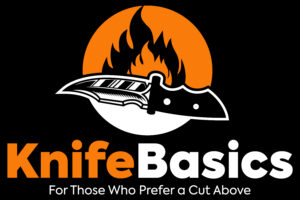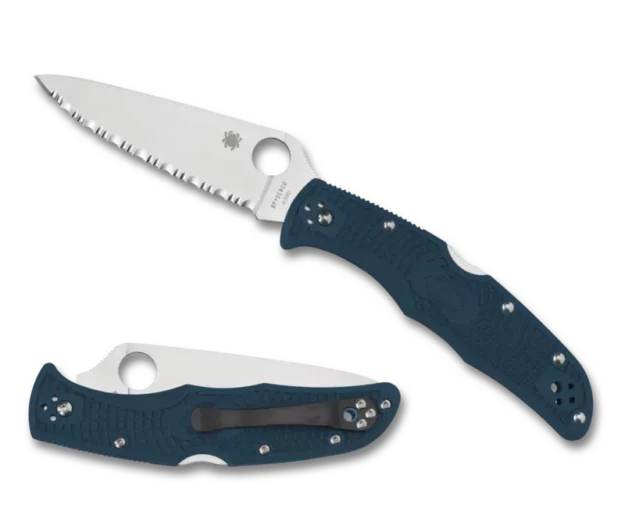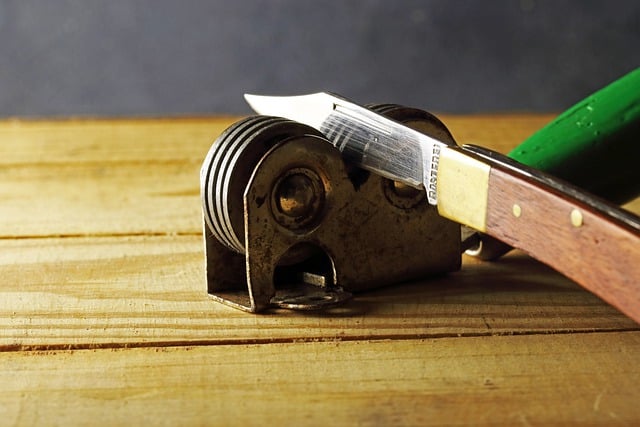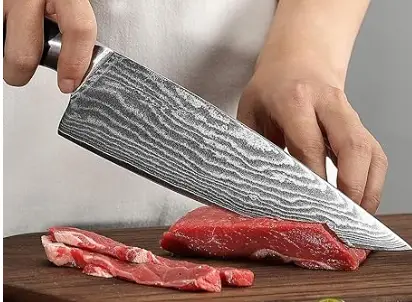What is K390 Steel?
K390 contains high amounts of Vanadium, giving it outstanding toughness and excellent wear resistance, making it a good choice for knife makers. In addition to knives, this steel is also used in the manufacture of cutting tools, screws, barrels, coining, and shearing applications.
K390 Steel Composition
- Carbon C 2.47%: Increases the edge retention, hardness and tensile strength. It also improves steel resistance to wear, abrasion and corrosion.
- Chromium Cr 4.20%: The formation of Chromium carbide Increases the hardness, tensile strength and corrosion resistance of the blade.
- Molybdenum Mo 3.80%: It improves machinability and hardness.
- Vanadium V 9.00%: Increase wear resistance and toughness, it also improves corrosion resistance.
- Tungsten W 1.00%: used as an alloying ingredient due to its high melting point, hence improving the performance of steel in high heat.
- Cobalt Co 2.00%: Increases the strength of steel and hot hardness temperature.
- Silicon Si 0.55%: Increases strength and heat resistance.
Properties of k390 steel
K390 Steel Hardness
K390 steel has a maximum Rockwell hardness of 65 HRC making it hard steel. It is not the hardest steel on the market because some steel scores up to 68 HRC, but it still offers outstanding wear and tear, the main reason it is used to make high-end knives.
K390 Steel Edge retention
One of the areas where K390 scores best is edge retention, which is expected because of the high amounts of Vanadium and Carbon composition. Knives made from this steel can remain sharp for long, even with frequent use.
Bohler K390 steel edge retention is better than CPM Cruwear, M4 steel and most other premium stainless steels like S30V. If you have been on the market for a knife that does not become dull often, K390 knives will sort you.
K390 Steel Wear resistance
Another area of excellence in K390 is its wear resistance. One thing for sure is, K390 knives will serve you for a long time without deteriorating. The high wear resistance is associated with the high amounts of Vanadium in this steel.
K390 Steel Corrosion resistance
As already mentioned, Bohler K390 is not stainless steel because of its low chromium contents, making it vulnerable to rusting. However, the minimal levels of chromium in its composition and proper care and maintenance protect K390 knives from rusting.
If stainless steel must feature in your knives, varieties made from this steel will not be a good choice for you.
K390 Steel Toughness
It is rare to get steel that offers you both high hardness and toughness, which is the case with K390. Since it is hard steel, it is less tough. This is not to say that it has the worst toughness on the market, but its toughness does not match other high-end steel.
It will handle several tough jobs, but you cannot use it for tougher applications like batoning. K390 toughness is slightly better than K110 steel, K340 steel and D2 steel but not by a significant margin.
K390 Steel Ease of Sharpening
K390 registers high hardness making it hard to sharpen. This does not mean that you will never get a sharp edge, but you will use more time and effort, especially if you do not have experience in knife sharpening.
However, you can make the process easy by opting for a modern sharpening system. To ease the burden of sharpening, K390 remains sharp for a long time.
K390 Steel Machinability
Another property that attracts knife makers to this steel is its easy machinability. It does not require much effort to cut and process Bohler K390, and it does not wear out the cutting machines. It is easier to work with because it contains high amounts of Molybdenum in its composition.
K390 Steel Equivalents
The closest steels that may be considered K390 steel equivalent in terms of performance are Vanadis 8 steel and CPM 10V steel. Both are high carbon vanadium steels with a similar level of edge retention to K390 blade steel, they are also non-stainless steel with below-average corrosion resistance. Stainless steel that would otherwise be considered K390 steel equivalent is S90V steel from crucible.
K390 Steel Comparison
K390 Steel vs M390
Both K390 steel and M390 steel are developed by the same company, but M390 steel offers outstanding corrosion resistance and wear resistance compared to K390 steel. M390 steel is stainless steel that contains 20% chromium in its composition, while K390 steel is non-stainless steel at less than 4.00%.
K390 steel vs VG10
VG 10 steel is stainless steel with 14.50% to 15.50% chromium content while K390 is non-stainless steel with 4% Chromium Content. Bohler K390 is a Powder metallurgy steel with higher carbon content at 2.55% compared to VG 10 steel’s 1.05%.
This carbon gives K390 higher hardness and wear resistance while enhancing its edge retention properties. K390 knives are thus better than VG10 steel in edge retention and wear resistance. On the other hand, VG10 steel beats K390 knife steel in toughness, and it is easier to sharpen.
VG10 steel is easier to sharpen than Bohler K390, it is also easier to maintain in terms of avoiding rust and staining. VG 10 steel is thus a popular choice for kitchen knives while K390 steel is a more popular choice for pocket knives due to its high edge retention.
K390 vs ZDP189
ZDP189 steel is stainless steel with 20% chromium content while K390 steel is non-stainless steel with 4% Chromium Content. ZDP189 steel has higher carbon content at 3.0% compared to K390 steel’s 2.55%. This carbon gives it higher hardness and wear resistance while enhancing its edge retention ability.
At a Rockwell hardness of 64-65HRC Bohler, K390 offers higher toughness than ZDP189 stainless steel. ZDP189 steel is highly brittle due to its high HRC brought about by the high content of carbide at about 30%.
It is worth noting that despite the high amount of chromium content in ZDP189 steel, its corrosion resistance isn’t as good as other stainless steel. Thus you should not entirely base your choice on corrosion resistance when choosing between K390 and ZDP189 steel.
K390 steel vs S30V
K390 steel has higher Vanadium content at 9.0% compared to S30V steel’s 4.0%. This Vanadium content gives it higher hardness and wear resistance while enhancing its edge retention ability due to the formation of hard Vanadium Carbides.
CPM S30V steel offers better toughness than K390 knife steel. The improved toughness of S30V steel is due to the better alloy composition that allows for the uniform distribution of finer carbides. The distribution not only improves the toughness but also the ease of sharpening.
S30V knife steel is stainless steel, it has better corrosion resistance than K390 knife steel as it contains a high amount of chromium elements 14% in its composition compared to 4% of K390. S30V knife steel is more suitable for outdoor knives where corrosion may be a problem.
K390 steel vs M4
Bohler K390 has higher Carbon content at 2.5% compared to the M4 steel’s 1.25%. Additionally, K390 has higher Vanadium Content at 9.0% compared to M4 steel’s 4.5%. These carbon and Vanadium give it higher hardness and wear resistance while enhancing its edge retention properties.
The high percentage of Vanadium Carbides in K390 knife steel enables it to offer better edge retention than M4 knife steel at 65HRC. However, M4 steel is a bit easier to sharpen than K390 knife steel when the need arises due to the fine and uniform carbide distribution.
At 65HRC M4 blade steel from crucible offers better toughness than Bohler K390. The increased toughness of M4 steel over K390 blade steel can be attributed to the less amount of brittle Vanadium and chromium carbides and the more balanced alloy composition.



